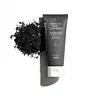What's inside
What's inside
 Key Ingredients
Key Ingredients

 Benefits
Benefits

 Concerns
Concerns

 Ingredients Side-by-side
Ingredients Side-by-side

Water
Skin ConditioningKaolin 20%
AbrasiveHouttuynia Cordata Extract 10.1%
Skin ConditioningGlycerin
HumectantPropanediol
SolventButylene Glycol
HumectantBentonite
AbsorbentHexylene Glycol
EmulsifyingZea Mays Starch
Absorbent1,2-Hexanediol
Skin ConditioningGlyceryl Glucoside
HumectantBetaine
HumectantDecyl Glucoside
CleansingCentella Asiatica Extract
CleansingFicus Carica Fruit Extract
HumectantLaminaria Japonica Extract
Skin ProtectingEclipta Prostrata Leaf Extract
Skin ConditioningSodium Hyaluronate
HumectantHydrogenated Lecithin
EmulsifyingSoluble Collagen
HumectantPotassium Cetyl Phosphate
EmulsifyingCalamine
AbsorbentHouttuynia Cordata Powder
Skin ConditioningXanthan Gum
EmulsifyingDipropylene Glycol
HumectantChlorella Vulgaris Powder
Skin ConditioningSodium Acrylate/Sodium Acryloyldimethyl Taurate Copolymer
Emulsion StabilisingPolyisobutene
Triethoxycaprylylsilane
Allantoin
Skin ConditioningSorbitan Oleate
EmulsifyingCaprylyl/Capryl Glucoside
CleansingFructooligosaccharides
HumectantProtease
ExfoliatingBeta-Glucan
Skin ConditioningPanthenol
Skin ConditioningHydrolyzed Hyaluronic Acid
HumectantCeramide NP
Skin ConditioningQuercetin
AntioxidantPalmitoyl Proline
Skin ConditioningTripeptide-5
Skin ConditioningParfum
MaskingHydroxyacetophenone
AntioxidantEthylhexylglycerin
Skin ConditioningPentylene Glycol
Skin ConditioningCI 77492
Cosmetic ColorantWater, Kaolin 20%, Houttuynia Cordata Extract 10.1%, Glycerin, Propanediol, Butylene Glycol, Bentonite, Hexylene Glycol, Zea Mays Starch, 1,2-Hexanediol, Glyceryl Glucoside, Betaine, Decyl Glucoside, Centella Asiatica Extract, Ficus Carica Fruit Extract, Laminaria Japonica Extract, Eclipta Prostrata Leaf Extract, Sodium Hyaluronate, Hydrogenated Lecithin, Soluble Collagen, Potassium Cetyl Phosphate, Calamine, Houttuynia Cordata Powder, Xanthan Gum, Dipropylene Glycol, Chlorella Vulgaris Powder, Sodium Acrylate/Sodium Acryloyldimethyl Taurate Copolymer, Polyisobutene, Triethoxycaprylylsilane, Allantoin, Sorbitan Oleate, Caprylyl/Capryl Glucoside, Fructooligosaccharides, Protease, Beta-Glucan, Panthenol, Hydrolyzed Hyaluronic Acid, Ceramide NP, Quercetin, Palmitoyl Proline, Tripeptide-5, Parfum, Hydroxyacetophenone, Ethylhexylglycerin, Pentylene Glycol, CI 77492
Water
Skin ConditioningKaolin
AbrasiveButylene Glycol
HumectantBentonite
AbsorbentVolcanic Ash
AbrasiveHectorite
AbsorbentSilica
AbrasiveCharcoal Powder
AbrasiveCaprylyl Glycol
EmollientPentylene Glycol
Skin ConditioningHydroxyacetophenone
AntioxidantCitric Acid
BufferingMagnesium Aluminum Silicate
AbsorbentXanthan Gum
EmulsifyingDisodium EDTA
Dipotassium Glycyrrhizate
HumectantLimus
Skin ConditioningEthylhexylglycerin
Skin Conditioning
 Reviews
Reviews

Ingredients Explained
These ingredients are found in both products.
Ingredients higher up in an ingredient list are typically present in a larger amount.
Bentonite is an aluminium phyllosilicate clay with great absorbent properties. The name 'bentonite' comes from the area where the largest source is found: Fort Benton, Wyoming.
As a clay, bentonite is often used to absorb excess oil and provide exfoliation. It has also been shown to have some antibacterial and anti-inflammatory properties. Studies show bentonite was effective at calming dermatitis from poison ivy and in diaper dermatitis of infants. Bentonite has also been shown to act as a barrier against toxic compounds on your skin.
Sunscreens containing bentonite display higher water resistance and stay on the skin for much longer. The sunscreens containing bentonite also show higher potency and UV light absorbtion.
Bentonite is naturally created from volcanic ash and several natural weathering/hydrothermal processes.
A common usage of bentonite is removing excess protein from white wines. Bentonite contains a property of being able to absorb large amounts of protein from aqueous solutions.
Phyllosilicate clay has a structure formed by sheets.
Learn more about BentoniteButylene Glycol (or BG) is used within cosmetic products for a few different reasons:
Overall, Butylene Glycol is a safe and well-rounded ingredient that works well with other ingredients.
Though this ingredient works well with most skin types, some people with sensitive skin may experience a reaction such as allergic rashes, closed comedones, or itchiness.
Learn more about Butylene GlycolEthylhexylglycerin (we can't pronounce this either) is commonly used as a preservative and skin softener. It is derived from glyceryl.
You might see Ethylhexylglycerin often paired with other preservatives such as phenoxyethanol. Ethylhexylglycerin has been found to increase the effectiveness of these other preservatives.
Hydroxyacetophenone is antioxidant with skin conditioning and soothing properties. It also boosts the efficiency of preservatives.
This ingredient is not irritating or sensitizing.
Kaolin is a clay. It is used for oil control and to help minimize pores. Like other clays, kaolin has the ability to absorb excess sebum or oil. This can help clean out pores and mattify the skin.
Some types of kaolin may have exfoliating properties. When water is added to kaolin, it becomes a paste with small abrasive particles.
Most kaolin is a white color, but may be pink/orange/red depending on where it comes from.
The name 'kaolin' comes from a Chinese village named 'Gaoling'. Kaolin clay comes from rocks rich in kaolinite. Kaolinite, the mineral, has a silicate layered structure. Kaolinite is formed from chemical weathering of aluminum siilicate minerals.
Besides skincare, kaolin is commonly used to make glossy paper, in ceramics, toothpaste, and as medicine to soothe stomach issues.
Learn more about KaolinPentylene glycol is typically used within a product to thicken it. It also adds a smooth, soft, and moisturizing feel to the product. It is naturally found in plants such as sugar beets.
The hydrophilic trait of Pentylene Glycol makes it a humectant. As a humectant, Pentylene Glycol helps draw moisture from the air to your skin. This can help keep your skin hydrated.
This property also makes Pentylene Glycol a great texture enhancer. It can also help thicken or stabilize a product.
Pentylene Glycol also acts as a mild preservative and helps to keep a product microbe-free.
Some people may experience mild eye and skin irritation from Pentylene Glycol. We always recommend speaking with a professional about using this ingredient in your routine.
Pentylene Glycol has a low molecular weight and is part of the 1,2-glycol family.
Learn more about Pentylene GlycolWater. It's the most common cosmetic ingredient of all. You'll usually see it at the top of ingredient lists, meaning that it makes up the largest part of the product.
So why is it so popular? Water most often acts as a solvent - this means that it helps dissolve other ingredients into the formulation.
You'll also recognize water as that liquid we all need to stay alive. If you see this, drink a glass of water. Stay hydrated!
Learn more about WaterXanthan gum is used as a stabilizer and thickener within cosmetic products. It helps give products a sticky, thick feeling - preventing them from being too runny.
On the technical side of things, xanthan gum is a polysaccharide - a combination consisting of multiple sugar molecules bonded together.
Xanthan gum is a pretty common and great ingredient. It is a natural, non-toxic, non-irritating ingredient that is also commonly used in food products.
Learn more about Xanthan Gum